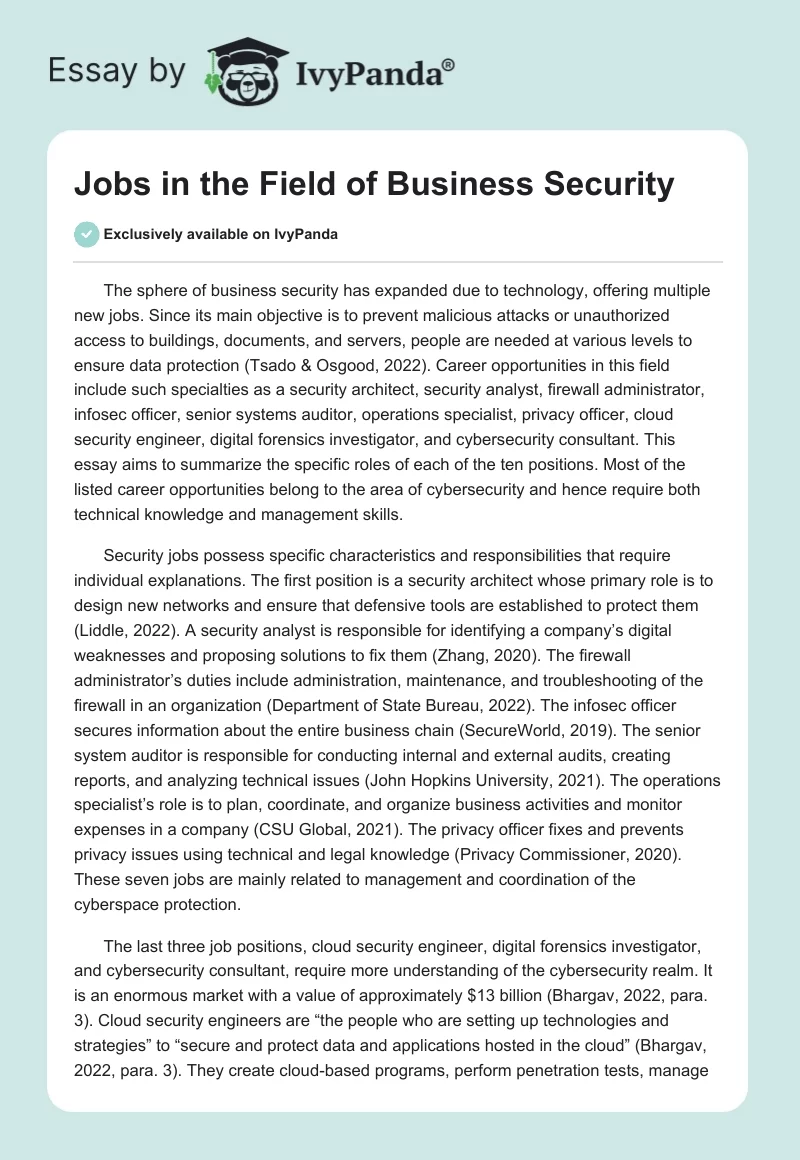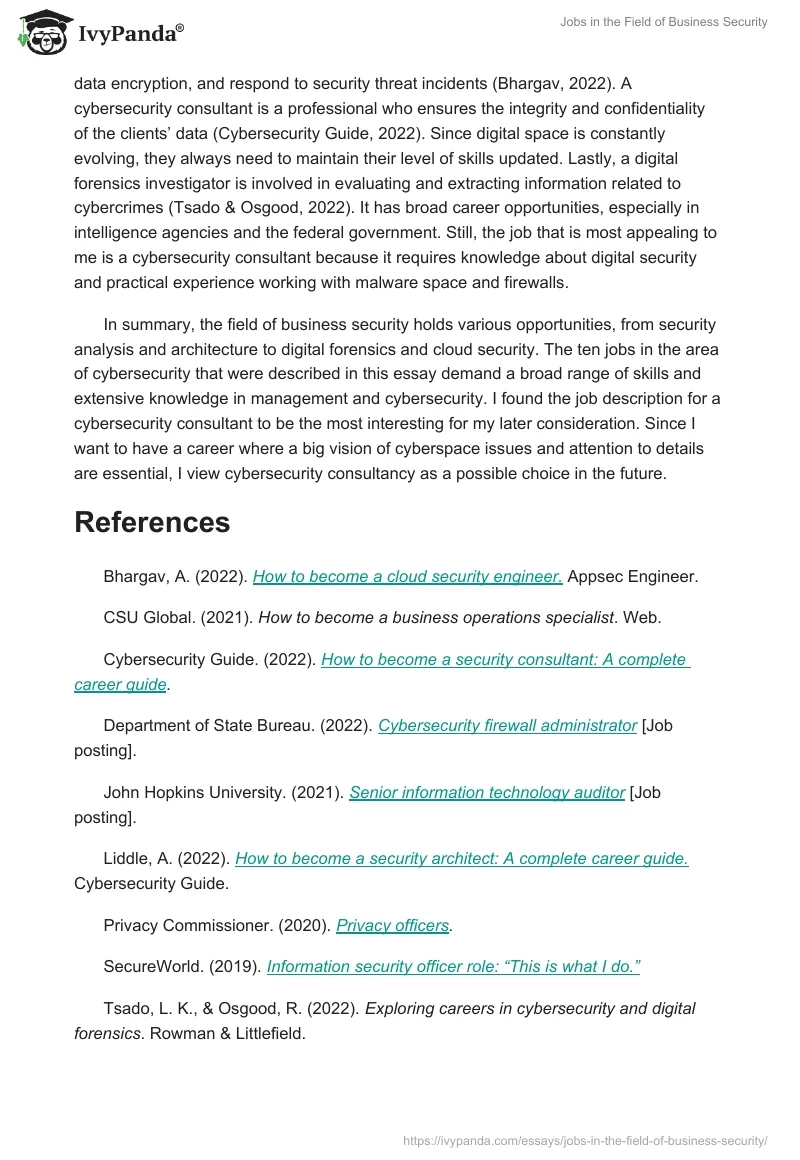The sphere of business security has expanded due to technology, offering multiple new jobs. Since its main objective is to prevent malicious attacks or unauthorized access to buildings, documents, and servers, people are needed at various levels to ensure data protection (Tsado & Osgood, 2022). Career opportunities in this field include such specialties as a security architect, security analyst, firewall administrator, infosec officer, senior systems auditor, operations specialist, privacy officer, cloud security engineer, digital forensics investigator, and cybersecurity consultant. This essay aims to summarize the specific roles of each of the ten positions. Most of the listed career opportunities belong to the area of cybersecurity and hence require both technical knowledge and management skills.
Security jobs possess specific characteristics and responsibilities that require individual explanations. The first position is a security architect whose primary role is to design new networks and ensure that defensive tools are established to protect them (Liddle, 2022). A security analyst is responsible for identifying a company’s digital weaknesses and proposing solutions to fix them (Zhang, 2020). The firewall administrator’s duties include administration, maintenance, and troubleshooting of the firewall in an organization (Department of State Bureau, 2022). The infosec officer secures information about the entire business chain (SecureWorld, 2019). The senior system auditor is responsible for conducting internal and external audits, creating reports, and analyzing technical issues (John Hopkins University, 2021). The operations specialist’s role is to plan, coordinate, and organize business activities and monitor expenses in a company (CSU Global, 2021). The privacy officer fixes and prevents privacy issues using technical and legal knowledge (Privacy Commissioner, 2020). These seven jobs are mainly related to management and coordination of the cyberspace protection.
The last three job positions, cloud security engineer, digital forensics investigator, and cybersecurity consultant, require more understanding of the cybersecurity realm. It is an enormous market with a value of approximately $13 billion (Bhargav, 2022, para. 3). Cloud security engineers are “the people who are setting up technologies and strategies” to “secure and protect data and applications hosted in the cloud” (Bhargav, 2022, para. 3). They create cloud-based programs, perform penetration tests, manage data encryption, and respond to security threat incidents (Bhargav, 2022). A cybersecurity consultant is a professional who ensures the integrity and confidentiality of the clients’ data (Cybersecurity Guide, 2022). Since digital space is constantly evolving, they always need to maintain their level of skills updated. Lastly, a digital forensics investigator is involved in evaluating and extracting information related to cybercrimes (Tsado & Osgood, 2022). It has broad career opportunities, especially in intelligence agencies and the federal government. Still, the job that is most appealing to me is a cybersecurity consultant because it requires knowledge about digital security and practical experience working with malware space and firewalls.
In summary, the field of business security holds various opportunities, from security analysis and architecture to digital forensics and cloud security. The ten jobs in the area of cybersecurity that were described in this essay demand a broad range of skills and extensive knowledge in management and cybersecurity. I found the job description for a cybersecurity consultant to be the most interesting for my later consideration. Since I want to have a career where a big vision of cyberspace issues and attention to details are essential, I view cybersecurity consultancy as a possible choice in the future.
References
Bhargav, A. (2022). How to become a cloud security engineer. Appsec Engineer.
CSU Global. (2021). How to become a business operations specialist. Web.
Cybersecurity Guide. (2022). How to become a security consultant: A complete career guide.
Department of State Bureau. (2022). Cybersecurity firewall administrator [Job posting].
John Hopkins University. (2021). Senior information technology auditor[Job posting].
Liddle, A. (2022). How to become a security architect: A complete career guide.Cybersecurity Guide.
Privacy Commissioner. (2020). Privacy officers.
SecureWorld. (2019). Information security officer role: “This is what I do.”
Tsado, L. K., & Osgood, R. (2022). Exploring careers in cybersecurity and digital forensics. Rowman & Littlefield.
Zhang, E. (2020). What is a security analyst? Responsibilities, qualifications, and more. Digital Guardian.


